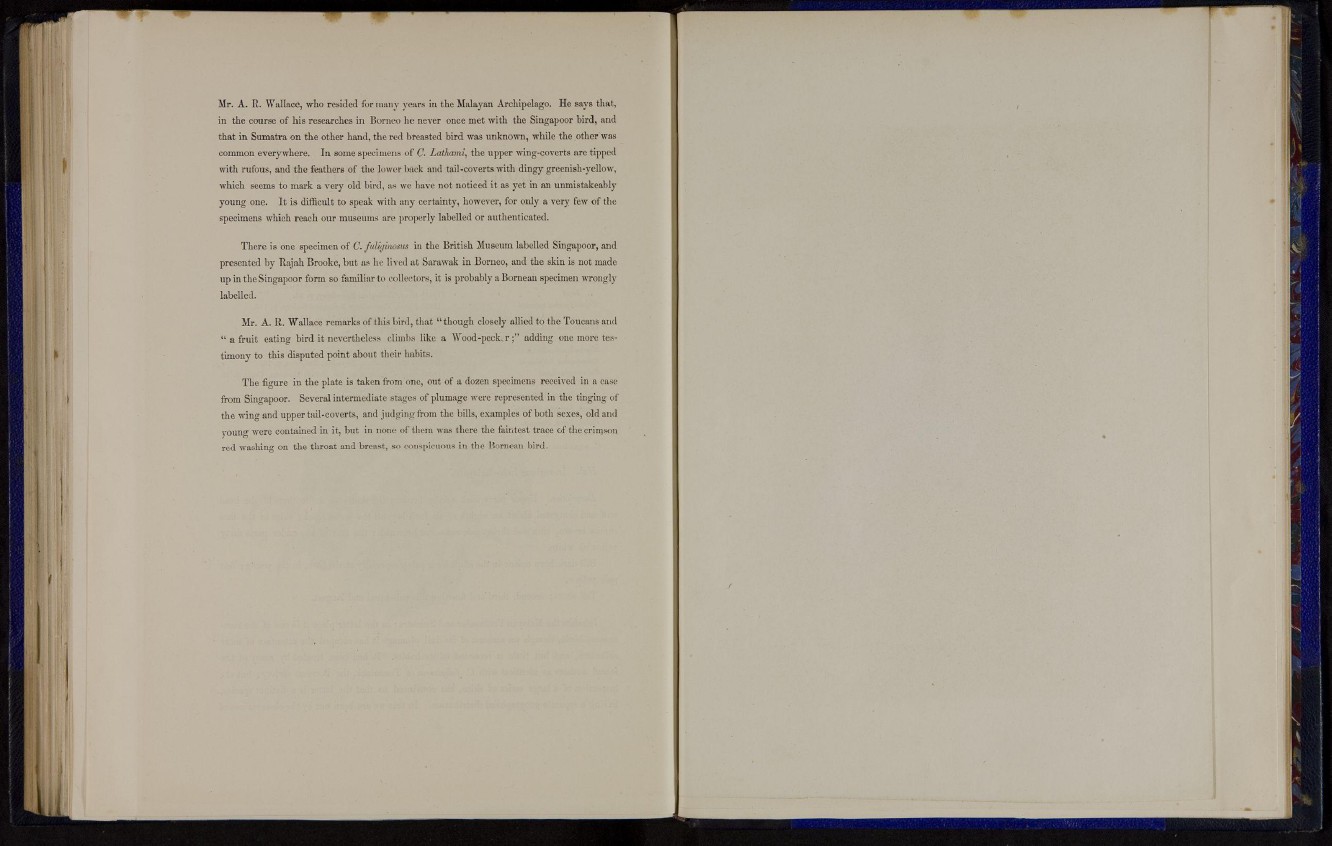
Mr. A. R. Wallace, who resided for many years in the Malayan Archipelago. He says that,
in the course of his researches in Borneo he never once met with the Singapoor bird, and
that in Sumatra on the other hand, the red breasted bird was unknown, while the other was
common everywhere. In some specimens of C. Lathami, the upper wing-coverts are tipped
with rufous, and t h e feathers of the lower back and tail-coverts with dingy greenish-yellow,
which seems to mark a very old bird, as we have not noticed it as yet in an unmistakeably
young one. It is difficult to speak with any certainty, however, for only a very few of the
specimens which reach our museums are properly labelled or authenticated.
There is one specimen of C. fuliginosus in the British Museum labelled Singapoor, and
presented by Rajah Brooke, but as he lived at Sarawak in Borneo, and the skin is not made
up in t h e Singapoor form so familiar to collectors, it is probably a Bornean specimen wrongly
labelled.
Mr. A. R. Wallace remarks of this bird, that "though closely allied to the Toucans and
" a fruit eating bird it nevertheless climbs like a Wood-peck, r ; " adding one more testimony
to this disputed point about their habits.
The fnrure in the plate is taken from one, out of a dozen specimens received in a case
from Singapoor. Several intermediate stages of plumage were represented in the tinging of
the wing and upper tail-coverts, and judging from the bills, examples of both sexes, old and
young were contained in it, but in none of them was there the faintest trace of the crimson
red washing on the throat and breast, so conspicuous in the Bornean bird.